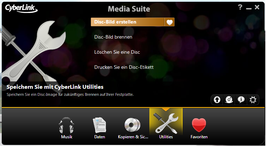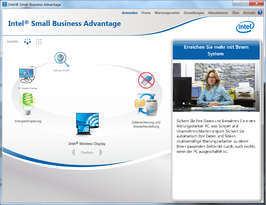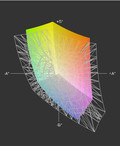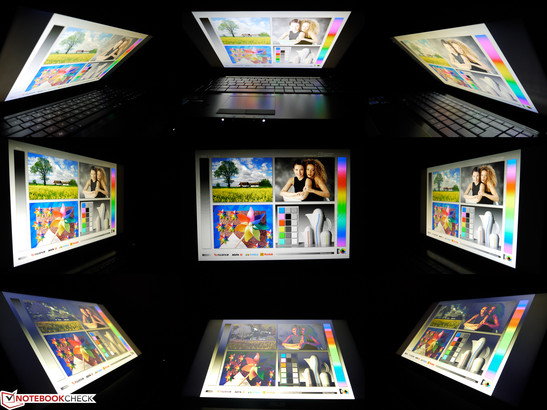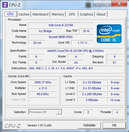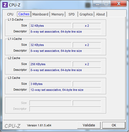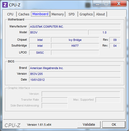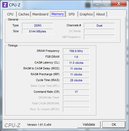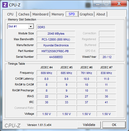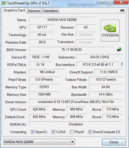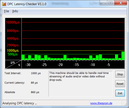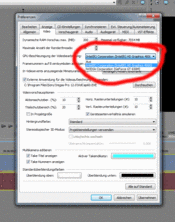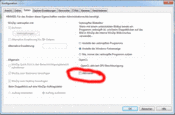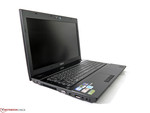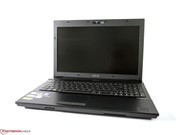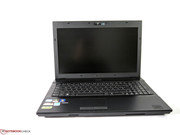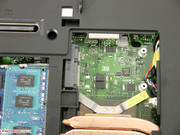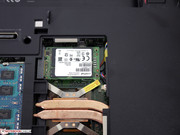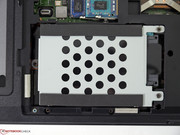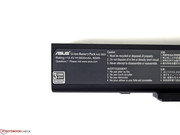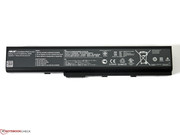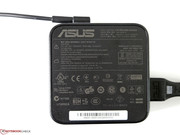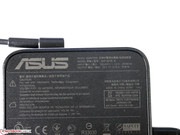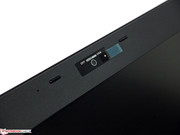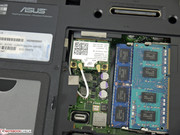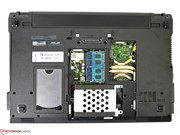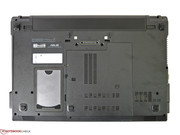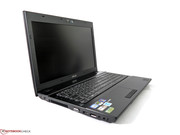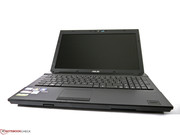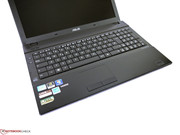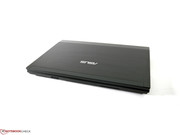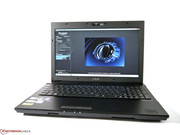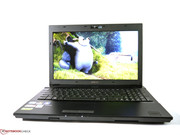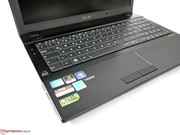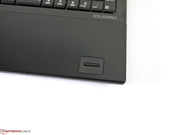Review AsusPro B53V-S4042X Notebook

For the original German review, see here.
Asus' Pro B53 is a typical business laptop. Special interfaces, partly uncommon components and qualities that are rarely found in mainstream devices off the shelf form the uniqueness and charm of this device category.
The ASUSPRO series is available for prices starting at approximately 500 Euros (~$642). The price can climb to over 1000 Euros (~$1285) depending on the configuration. Thus, the casing has to straddle the entry-level and upper midrange in order to cater to the need of all target groups. Competitors would for example be Lenovo's L-series ThinkPads (L530) as well as the T-series (T530), particularly if a Full HD screen and the professional Nvidia NVS 5200 is essential. Other contenders are HP's ProBook 6570b, HP's EliteBook 8570p, Dell's Latitude E5530 and Dell's Latitude E6530, just to name a few.
Our Asus Pro B53V-S4042X test model features Intel's Core i5-3210M CPU, Nvidia's NVS 5200 graphics with Optimus technology, 6 GB of RAM, a 500 GB hard drive and a matte Full HD screen. Windows 7 64 bit is still used as the operating system and its price is approximately 950 Euros (~$1221).
Case
The black-gray casing exhibits a very unobtrusive design and does not reveal any slips like high gloss or chrome trimmings. In line with the taste and needs of the business sector, its looks fully comply with the corporate understatement idea. The mostly roughened plastic surfaces are slightly highlighted by a rim around the keyboard and display lid in brushed aluminum looks. Regrettably, these areas are quite susceptible to fingerprints that can only be removed by persistent polishing.
The casing's stiffness generally makes a good impression. The wrist rest is firm and the display lid can only be twisted marginally. However, weak points are found above the battery compartment and on the base in the area of the optical drive. The material can be dented easily in both areas. The material's poor stiffness is particularly noticed underneath the optical drive because the laptop is often picked up exactly here. Then, the casing creaks and conveys a weak impression. The weight of almost 2.8 kilograms exceeds that of the one or other contenders by 100 to 200 grams. In return, a high-capacity battery, which is not always customary in other laptops, is included. The dimensions of approx. 3.5 x 38 x 26 centimeters are within the range of the standard category.
Connectivity
The connectivity of Asus' Pro B53V covers all essential interfaces and even offers alternatives with eSATA and HDMI that are not the rule. USB 2.0, USB 3.0, DisplayPort, VGA and a card reader can be seen as imperative standard interfaces for the business sector. Missing interfaces can be retrofitted via ExpressCard34. A docking port enables connecting external peripherals and expansions quickly in stationary use. Up to four monitors (including the laptop screen) can be connected to Asus' Pro B53V owing to Nvidia's graphics. The Asus PowerStation II does not feature any important interfaces that are not found on the laptop, except for DVI-D. Quite the contrary is true seeing that eSATA and USB 3.0 are only available directly on the laptop. The docking station is compatible with all models from the series and costs about 160 Euros (~$205).
The interface positioning is partly quite unfavorable. Particularly the monitor ports on the left and the fast USB 3.0 and eSATA port on the right could restrict the user's elbowroom when peripherals are connected.
Communication
A dual-band capable Intel Centrino Advanced-N 6235 WLAN module befitting Asus' Pro B53V is installed. Thus, the 5 GHz band can be used in addition to the highly-frequented 2.4 GHz band. Theoretical transmission rates of up to 300 Mbit/s are possible via this module equipped with 2 antennas. We did not experience any connection problems in the practical test. Compared with Asus' N76VZ featuring an Atheros Wi-Fi adapter, we even had a signal strength of plus one bar depending on the distance. Gigabit LAN and Bluetooth 4.0 are further connection options. The webcam has a resolution of two megapixels and is sufficient for video calls. It can be covered manually via a hardware switch.
An empty mini-PCIe slot could accommodate a WWAN card. However, the necessary antennas for the user to retrofit this are missing just like models featuring an integrated broadband module. 3G/3.5G support is listed in the configuration specs and corresponding drivers can also be found on Asus' support site though. Perhaps such models are yet to be made available in some places.
Security
Asus uses all the security features that are currently available in business laptops: Trusted Platform Module 1.2, Smart Card reader, fingerprint scanner, face recognition, Computrace service and Intel's Anti-Theft offer many configuration options. Beyond that, the usual password options on BIOS and system level are also available. More information about security solutions for laptops can be found in our corresponding FAQ article.
Accessories
Asus also stuffs the system installation with plenty of tools and software in its business sector. The eManual can be recommended to inexperienced users as it explains the most important features quite plainly and offers a good first insight. Various setting options, from energy saving over USB-lock up to Wireless Display functionality, are summarized in Intel's Small Business Advantage tool. The user should otherwise very carefully consider what really is necessary.
Maintenance
The large maintenance cover on the base enables accessing the working memory, hard drive and an empty mini-PCIe slot. It apparently does not support mSATA standard because our Crucial m4 mSATA SSD was not identified. The fans cannot be accessed and thus the casing would have to be opened even further to clean them. However, this could lead to loss of warranty. We did not find any clarifying information about which components can be replaced by the user. The user should ask the manufacturer beforehand to be on the safe side.
Warranty
Asus includes a 24 month pick-up and return service. Three years is given on the battery. Asus offers a warranty upgrade to three years for a reasonable 69 Euros, ~$88 (79 Euros, ~$101, international).
Input Devices
Keyboard
The standard-sized keyboard features a dedicated number pad. The lettering is high-contrast and the layout is standard. Special functions are implemented as FN combinations in the F-key row, but not visibly highlighted. Our test model did not have a backlight and it is generally not provided.
The keys are arranged in a 19 mm grid and look very big because the surface is level. This needs some getting used to since the gaps between the keys are much smaller than in models with beveled sides or larger spacing. However, users will likely notice the sometimes more and sometimes less intensely teetering keyboard over the entire surface. This causes an undefined pressure point and spongy typing feel. It is a matter of personal taste whether the medium drop and quiet key stroke can compensate for that. The keyboard has to be classified as borderline for prolific typists.
Touchpad
The touchpad features an area of 80 x 50 millimeters and agreeable gliding traits. Its responsiveness and implementation of finger taps is good. However, the area is a bit tight for some multi-finger gestures and the finger will often have to be placed a second time. The dedicated touchpad buttons are very quiet, slip-proof and implement inputs very reliably. A TrackPoint as known from ThinkPads, Latitudes or ProBooks is not available.
Display
Our test model features a 15.6-inch Full HD screen (1920x1080 pixels) and has a pixel density of 141 dpi. This results in a much bigger desktop than on the optionally available WXGA screen with a resolution of 1366x768 pixels. The Samsung screen in our test model uses TN technology, is illuminated by white LEDs and has a matte surface.
| |||||||||||||||||||||||||
Brightness Distribution: 85 %
Center on Battery: 329 cd/m²
Contrast: 567:1 (Black: 0.58 cd/m²)
55% AdobeRGB 1998 (Argyll 3D)
75.6% sRGB (Argyll 3D)
53.4% Display P3 (Argyll 3D)
We ascertained the maximum brightness at nine different measuring points and recorded results ranging from 290 cd/m² in the upper right corner up to 341 cd/m² in the upper center. That is a maximum average of 311 cd/m² at an illumination of 85%. The brightness can be regulated in ten levels and is not dimmed in battery mode. Thus, the maximum brightness is available for outdoor use, which ensures a well-recognizable image. However, direct sunlight should be avoided because it can otherwise get quite strenuous for the eyes.
The contrast of Samsung's screen is 567:1 and clearly surpasses the usual standard screens. Colors look rich and the user will see a fairly saturated black. Movies, pictures and games simply look a lot nicer and much more realistic.
The sum of reproducible colors can only cover the sRGB color space to a part and reaches approximately 70%. That is remote from the required coverage in graphic fields. At least the screen exhibits a good gray scale resolution, still sufficient color accuracy and viable saturation rates after calibration. But this will not satisfy many photographers and graphic designers from the professional field because clear disadvantages have to be accepted compared with external standard monitors.
The TN screen's viewing angle stability offers a fairly wide field of view, but cannot prevent the image from fading or inverting vertically. IPS screens are much better in this sector and only a very marginal deviation is seen. The user will have to cope with a slight brightness loss and a visible yellow shimmer when looking from the side.
Generally, Asus has installed a high-quality screen, which is only usable with restrictions for graphic designers, photographers and other application fields that rely on color accuracy.
Performance
The Asus Pro B53V offers solid standard components that can provide enough power for many tasks. Our test model uses Intel's Core i5-3210M CPU, 6 GB of RAM (1 x 4 GB + 1 x 2 GB), a 500 GB hard drive and Nvidia's Optimus via Intel HD Graphics 4000 and Nvidia NVS 5200. Optionally, older configurations with a similarly strong Intel CPU or AMD's Radeon HD 6470M graphics are also available. However, they only feature a WXGA screen. Our test model represents the current top model and costs approximately 950 Euros (~$1221).
Processor
Intel's Core i5-3210M features all cutting edge technologies such as Hyper Threading, Turbo Boost and 64 bit capability. Thus, it can process up to a maximum of 4 threads at the same time and boost single-thread tasks up to 3100 MHz. This ensures a situation adapted, ideal utilization of the technical possibilities. The processor achieved a quite impressive score in the benchmarks that use only one core and thus benefit from a particularly high clock. The SuperPi 32M calculation was finished in 657 seconds and 5221 points was accomplished in Cinebench R10 64 bit single-core. Converting MP3 files to AAC via iTunes is possible with a maximum speed of x43.4.
As good as the scores might be from applications that only support one core, as clear is the difference compared with quad-cores that benefit from multi-core support. The wPrime 1024m calculation took a quite long 544 seconds and relatively low 10901 points was reached in the Cinebench R10 64 bit multi-core benchmark. The results in the multi-core range are roughly twice as high (CB R10 64 bit: 21000 points) with a standard quad-core CPU, such as Intel's Core i7-3610QM.
The user will have to reckon with a clear performance drop in battery mode. The CPU only clocks with 1200 MHz. For example, only 1.05 points rather than 2.88 points was achieved in the Cinebench R11.5 multi-core benchmark. On the other hand, the full performance is maintained during full load when the power supply is connected. We could not provoke CPU throttling.
System Performance
The system performance remains behind its potential due to the conventional hard drive. Beyond that, the system start is needlessly delayed by the innumerable tools that have to be loaded. We ascertained a time of 1:59 minutes before Windows was really usable. Even after that windows popped up and prompted us to register for this or that. The first step for faster booting is deleting unnecessary software and the second could be replacing the storage device. A swift solid state drive would also lead to a subjectively higher speed when opening programs and files. The system accomplished 6970 points in PCMark Vantage and 2042 points in PCMark 7. As we mentioned, the storage device is the main bottleneck though.
| PCMark Vantage Result | 6970 points | |
| PCMark 7 Score | 2042 points | |
Help | ||
Storage Devices
Toshiba's conventional hard drive spins with a revolution speed of up to 5400 rpm and has an 8 MB cache. This hard drive's big advantage is its virtually inaudible operating noise. A very quiet clacking can only be heard when the hard drive is accessed. While the capacity of 500 GB is quite practical, this is not quite as true for the speed. An average transfer rate of 76 MB/s and access time of 18.4 ms convey the impression of a very sluggish drive. Since Asus' Pro B53V only sports one hard drive slot and the mSATA standard is not supported, this point can only be improved by exchanging the drive.
Graphics Card
Asus' Pro B53V features Nvidia's Optimus technology and can fall back on both the integrated Intel HD Graphics 4000 as well as the Nvidia NVS 5200M graphics designed for the professional field. As usual, it is possible to select either one of the two graphic chips as the standard GPU and to assign it to the used software manually or automatically. The performance of Nvidia's NVS 5200 roughly corresponds to that of a conventional Nvidia GeForce GT 620M / GT 625M. In contrast to the stronger Nvidia NVS 5400M, the memory bandwidth of the NVS 5200M is only 64 bit and only supports a maximum dedicated graphics memory of 1 GB.
The core clock is 625 MHz and can be increased to 715 MHz via Turbo like in our test model. Besides the otherwise many identical qualities, Nvidia touts the NVS 5200M to have a particularly high reliability and stability in connection with professional applications. It can also control up to four monitors at the same time.
Nvidia's NVS 5200M is on a par with Nvidia's GeForce GT 620M in the graphic benchmarks. 1136 points was achieved in 3DMark 11 and 26.10 fps in Cinebench R11.5 OpenGL, for example. More comparison rates can be found in our comprehensive GPU benchmark chart.
| 3DMark 06 Standard Score | 7503 points | |
| 3DMark Vantage P Result | 4358 points | |
| 3DMark 11 Performance | 1136 points | |
| 3DMark Ice Storm Standard Score | 41446 points | |
| 3DMark Cloud Gate Standard Score | 4241 points | |
| 3DMark Fire Strike Score | 671 points | |
Help | ||
Owing to both graphic chips, various technologies can be drawn on with Asus' Pro B53V, which make it possible to outsource computing tasks to the GPU. OpenCL, Nvidia CUDA and Intel Quick Sync are now used by many programs to generate a speed advantage. Performance demanding filters and effects can be accelerated in Photoshop CS 6; WinZip 17 uses OpenCL for compressing files; in addition to certain effects, the AVC / H.264 coding also has benefits in Sony Vegas 12 and we have included the converting programs Badaboom and MediaEspresso many times in our practical tests. We again used Cyberlink's MediaEspresso to exemplify which speed advantage can be achieved in video converting compared to CPU-only calculation.
Although Nvidia's NVS 5200M is associated with the professional field, a performance advantage in professional 3D construction software (CAD, etc.) cannot be expected. The scores of the SPECviewperf 11 benchmark are on a par with the conventional GeForce graphics chip. Models, such as Nvidia's Quadro or AMD's FirePro, are much stronger in this application scenario.
The graphics performance drops by approximately 40% in battery mode. For example, we only achieved 17.05 fps rather than 26.10 fps in Cinebench R11.5 OpenGL Shading In return, we did not record any performance losses even after two hours of full load when the power supply was connected. The GPU-Z tool always displayed the GPU clock rate with its maximum Turbo of 715 MHz.
Gaming Performance
The gaming suitability is basically limited to low and medium resolutions and quality settings. Compared with the Intel HD Graphics 4000, only a slightly higher performance in form of a few fps can be seen. This could result in a slightly bigger margin for some quality controls. More comparison rates can be found in the review of the Asus Pro B43V and in our comprehensive gaming benchmark chart.
| low | med. | high | ultra | |
|---|---|---|---|---|
| World of Warcraft (2005) | 267 | 138 | 34 | |
| StarCraft 2 (2010) | 137 | 38 | 20 | 9 |
| Tomb Raider (2013) | 41.2 | 17.4 | 11.9 |
Emissions
System Noise
Asus' Pro B53V in our test configuration is an exceptionally quiet business laptop. Its virtually silent 29.2 dB(A) during low load was only interrupted by an occasional brief and quiet fan noise. The cooling element muted again after this short ventilation. The fan's speed naturally increased during medium load and reached a very audible 37.3 dB(A). This is the load that is common for converting and gaming. The maximum fan level of 40.4 dB(A) was only generated during maximum CPU and GPU load and will unlikely be deemed unpleasant by most users even after a longer time.
Noise level
| Idle |
| 29.2 / 29.2 / 29.2 dB(A) |
| HDD |
| 30.4 dB(A) |
| DVD |
| 35.7 / dB(A) |
| Load |
| 37.3 / 40.4 dB(A) |
 | ||
30 dB silent 40 dB(A) audible 50 dB(A) loud |
||
min: | ||
Temperature
The low noise development does not have a negative effect on the casing's surface temperatures. We measured a maximum of 36.4 °C during low load and a maximum of 39.6 °C after two hours of full load in the vent's area. The wrist rest and keyboard were always cool and thus using the device on the lap is possible even during full load. We did not observe CPU or graphics throttling.
(+) The maximum temperature on the upper side is 32.4 °C / 90 F, compared to the average of 34.3 °C / 94 F, ranging from 21.2 to 62.5 °C for the class Office.
(+) The bottom heats up to a maximum of 37.5 °C / 100 F, compared to the average of 36.8 °C / 98 F
(+) In idle usage, the average temperature for the upper side is 27.6 °C / 82 F, compared to the device average of 29.5 °C / 85 F.
(+) The palmrests and touchpad are cooler than skin temperature with a maximum of 28.2 °C / 82.8 F and are therefore cool to the touch.
(±) The average temperature of the palmrest area of similar devices was 27.6 °C / 81.7 F (-0.6 °C / -1.1 F).
Speakers
The speakers' sound quality only reaches the usual business standard despite the Altec Lansing logo. They can only be seen as a makeshift solution featuring a treble-heavy, bass-lacking and virtually inaudible midrange sound. The maximum volume is also too low and tends to distort in the last levels. External solutions can be connected via analog jack, S/PDIF or HDMI with 7.1 channel support. The headphone and microphone have dedicated jacks.
Energy Management
Power Consumption
The power consumption ranges from a minimum of 7.8 watts up to a maximum of 66.5 watts. It is just the minimum consumption that is made possible by the Intel HD Graphics 4000. The idle consumption is approximately 2 watts higher when Nvidia's graphics is active. Another prevalent consumer is the screen. We ascertained a consumption increase of roughly 4 watts from minimum to maximum brightness. However, the user then has a very bright screen that can be used comfortably outdoors. Altogether, the consumption rates are low to moderate and offer good preconditions for long battery runtimes. A Sonata Longlife battery with a capacity of 80 Wh was included for our test device. The battery closes flush with the casing. In addition to the fairly generous capacity, Asus includes an above average warranty of 3 years on this model.
| Off / Standby | |
| Idle | |
| Load |
|
Key:
min: | |
Battery Runtime
The test model achieved 568 minutes of mains independence in Battery Eater's Reader's test using minimum brightness, energy saving mode and disabled wireless modules. It was still a good 5:22 hours in the Wi-Fi test with an adapted brightness of approx. 150 cd/m². DVD playback was not quite as long with a runtime of 4:41 hours using energy saving mode, Intel Graphics 4000, wireless off and maximum brightness.
Asus' Pro B53V provides much better full load battery runtime than the rates we measured at the mains let us assume. Besides the Nvidia Optimus technology and the 80 Wh battery, Asus also does not at all shy from reducing the clock rate of the graphics chip and processor. Also probably not to exceedingly overstrain the long-life dubbed Sonata battery. This led to 3:25 hours in Battery Eater's Classic test using maximum brightness, high-performance mode and enabled wireless modules. However, this very long minimum runtime also includes a clear performance decrease.
Verdict
Asus' Pro B53V is a solid business laptop that particularly convinces with its extensive configuration, quiet operating noise and long battery runtimes. Typical business features like a docking port, Smartcard reader and DisplayPort are also found. The casing is overall rigid and well built. However, quite noticeable weak points are seen underneath the optical drive and above the battery compartment.
The system performance is sufficient for many office tasks and is also suitable for converting and rendering tasks when technologies like CUDA, OpenCL and Quick Sync are supported. Nvidia's NVS 5200M can provide a slightly higher performance than the Intel HD Graphics 4000 in 3D graphics performance, but it quickly finds its limits in demanding tasks. The recurrently perceivable weak point in terms of performance is the slow conventional hard drive. It slows the total system in many situations and causes an overall sluggish responsiveness.
While this drawback can be alleviated quite well by exchanging the drive, it is not possible with the middling keyboard. Particularly prolific typists will probably dislike the teetering keyboard mat and the unclear pressure point.
It is also not possible to do anything about the reduced performance of the processor and Nvidia graphics in battery mode. On the other hand, just this intervention makes the especially long minimum runtime of over 3 hours possible.
The high resolution screen compels with its high brightness, good illumination and decent contrast. The imperfect color accuracy, viewing angle stability and color space coverage will likely only be an excluding criterion in the graphic and image processing field.
If the user can accept the one or other drawback, the Asus' Pro B53V is an attractively priced business laptop that can keep up with the established competition, if not excel it.






